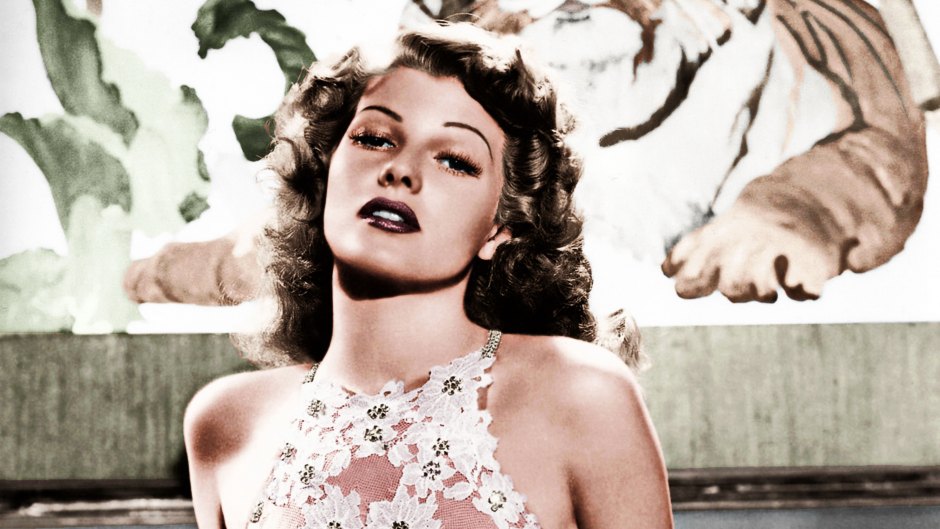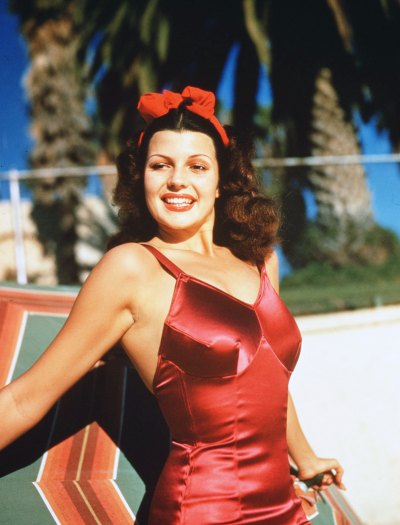
Hollywood Photo Archive/Mediapunch/Shutterstock
Movie Bombshell Rita Hayworth Lived a ‘Difficult and Painful’ Life Filled With Dark Secrets
The press dubbed her “the Love Goddess,” and her fans worshipped her. Known as much for her fiery hair and voluptuous figure as she was for her acting, Rita Hayworth became a cultural icon in films, including Gilda and Pal Joey. She was so universally loved by G.I.s that in 1946 her image was drawn onto the side of an atomic bomb. Said Orson Welles, who was married to this real-life bombshell at the time: “I want my daughter to be able to tell her daughter that Grandmother’s picture was on the last atom bomb ever to explode.”
Yet behind the glamorous façade, Rita was a complicated woman who harbored many difficult and painful secrets. She married five times and had many affairs, but lasting love and real happiness remained elusive throughout her life. “I felt something deep within her I couldn’t help — loneliness, sadness — something that would pull me down,” said her onetime paramour, Kirk Douglas. Orson agreed: “All her life was pain.”
Pulled out of school at 12 to join the vaudeville circuit with her father, Seville-born dancer Eduardo Cansino , Rita never had friends her own age. “Rehearse, rehearse, rehearse,” recalled the star, who was then known by her birth name, Margarita Cansino. “That was my girlhood.”
There were darker goings-on as well. Although her mother, Volga Hayworth, tried to protect her, Rita later told Orson that her father sexually molested her when they were on the road — and she remained permanently scarred by the experience. “Because her father was so abusive, she didn’t have any role models,” says biographer Adrienne McLean, the author of Being Rita Hayworth: Labor, Identity, and Hollywood Stardom. “He kept her isolated, too.”

By the time she became a teenager, this young beauty began scoring bit parts in films. At 18, Rita married Ed Judson, a salesman nearly twice her age, who convinced her to dye her hair red and adopt her mother’s maiden name “Hayworth” to appear less Mediterranean. She signed with Columbia Pictures, and though she later called studio head Harry Cohn a “monster” who was “very possessive of me,” he helped Rita skyrocket to stardom.
Fame didn’t make her happy. She divorced Ed in 1942, married Orson a year later and gave birth to a daughter, Rebecca. But Orson was unfaithful. And like Rita’s subsequent marriage to Prince Aly Khan, their relationship was rocked by her drinking and mood swings. “I just saw this lovely girl destroying herself,” Orson later said.
Rita’s erratic behavior became more severe in her 40s. According to McLean, she was often in “a state of confusion” during her marriages to Dick Haymes and James Hill. And it terrified her. In a vicious cycle, she would “drink to get away from that sense of losing herself.”
In 1980, Rita, then 62, was finally diagnosed with early onset Alzheimer’s disease — and became the face of an illness rarely discussed in the past. “It’s upsetting that we all thought that she was drinking and we attributed all of her behavior to her being an alcoholic,” her nephew, Richard Cansino, said. “I feel guilty I perceived it that way.”
Rita spent the remaining seven years of her life in a New York City apartment adjoining that of her younger daughter, Yasmin Khan, who cared for her along with devoted, lifelong friends like Glenn Ford and Orson. Said Orson a day before his own death in 1985: “Rita is one of the dearest and sweetest women that ever lived.”






































